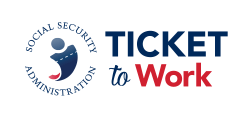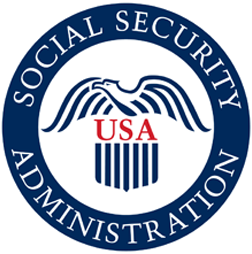Developing the IWP
Once you have completed the intake process, you may begin working with the beneficiary to develop an Individual Work Plan (IWP). During intake, service providers should gain some knowledge of a beneficiary's strengths and weaknesses, career goals and skill level. This information gathered during the intake process should guide the development of the IWP. The following are specific elements that should be included in the IWP.
Statement of Understanding: The Statement of Understanding is written from the beneficiary's point of view. This makes it clear that the Employment Network (EN) will provide certain services in an effort to help the beneficiary earn enough to become financially independent. To ensure understanding, each goal should be clear and measurable. Every IWP must also include a statement noting that the IWP can be changed if the needs of the beneficiary change.
Contact Information: A beneficiary's contact information is used to contact him/her for quality assurance purposes and to issue Ticket to Work updates by the Social Security Administration (Social Security). The Ticket Program Manager (TPM) and Social Security find that this information is often incomplete. Additionally, as more beneficiaries begin to utilize email or text messaging, this section is included as a value-added resource to improve communication efforts, not only for the EN but also for the beneficiary, Social Security and TPM. ENs are encouraged to solicit as much contact information as possible from the beneficiary. The IWP template encourages completion of this information.
Short-Term Vocational Goals: The IWP covers the beneficiary's expected short-term vocational goals, and what the beneficiary can strive to earn or expect to earn while working toward these goals during the next three to eighteen months. When completing the short-term vocational goal, it is recommended to use the SMART method of goal setting. Setting goals that are (S)pecific, (M)easurable, (A)chievable (R)ealistic and (T)imely ensures that the goals are clear and meet Ticket to Work Program and regulatory requirements.
Long-Term Vocational Goals: This section is where the long-term vocational goal should be listed. This is the employment goal that the beneficiary wants to reach in the next three to five years. Again, to ensure clear and measurable goals, following the SMART method is recommended.
Services and Supports: The IWP details career counseling and guidance, job search or placement service, job coaching and training, job accommodation and planning, and continuing employment needs.
Trial Work Level (TWL) Earnings: The beneficiary should expect to earn TWL or above as he or she begins working towards financial independence. TWL amounts change annually. The EN must be familiar with the current stated TWL amounts to ensure compliance. We realize that the exact amount of earnings is not known, hence the word “expected”. The intent of this section is for the beneficiary to see what their income earnings will look like or should look like, and to know and understand what to expect and for how long.
Substantial Gainful Activity (SGA) Earnings: We know with the short-term goals, the beneficiary should meet TWL. Therefore, the beneficiary's long-term goal should meet SGA. Since SGA amounts also change annually, the EN should ensure that they are familiar with the amounts for beneficiaries with disabilities other than blindness and amounts for beneficiaries who are blind or visually impaired. It is important that the EN ensures that a long-term goal includes plans for reaching SGA.
Discussions with the beneficiary about how their earnings will affect their benefits should occur. The EN should be able to answer any questions raised by the beneficiary and, if available, use any additional resources to ensure understanding is encouraged.

